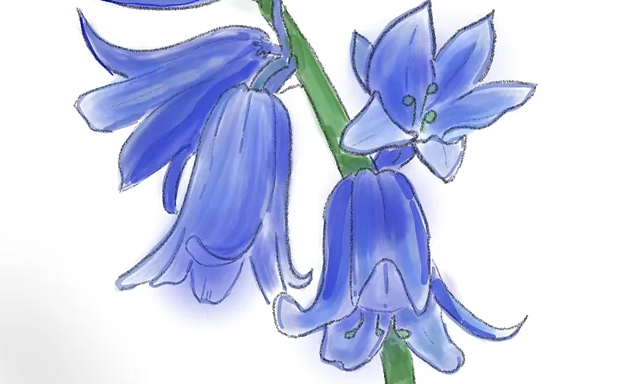Dahlia Tutorial
- Sarah Frey

- Aug 28
- 2 min read


The Vibe: We’re walking through the botanical gardens and stop at a well-placed bench to sit a while. Listen to the birds and the trickling water of the nearby fountain. Enjoy the beauty of the blooms around us.
The Playlist:
The Materials:
Water cup
Paper towels or cloth
Watercolor paints of your choice (see color palette below)
Mixing palette/plate (I recommend ceramic or porcelain for easy mixing)
Brushes (I recommend a no. 6 and no. 2 round)
The Color Palette:
For this piece, I primarily used two colors: magenta and earth green/terra verde.
Go outside, listen to the breeze, and let’s paint.
VIDEO TUTORIAL COMING FALL 2025
Step-By-Step Instruction:
1.iSet the Scene | On a flat surface, set out water, paper towels, paints,
a mixing palette/plate, and desired paintbrushes. I recommend a #6 round brush for washes of color and a #2 round for details.
2. Prep Your Paints | Put a water drop on each color to “wake up” your watercolor. Before painting directly on the page, mix colors & water on your mixing plate to get your desired shade.
3. Use Water Wisely | More water = lighter color. Less water = bolder color.
Play with both! You can use the back of the title cards for practice. If you experience pooling, your brush is too wet - dab it on the paper towel. You can remove the pooled watercolor with a clean, dry brush.
4. Start Light | Put down a light wash of color over each distinct area with
your larger brush first - avoiding any areas that you want to keep white/general highlights. For example, use a light wash of magenta to color in the petals and a light wash of green to paint in the stem and leaves.
5. Layer Slowly and Add Details | Let each layer dry before adding more color. Using less water than your initial wash for a slighter bolder hue, use your no. 6 brush to add shadows and use your no. 2 detail brush to follow the outlines in each distinct area. For example, use a bolder magenta (less water than you used for the initial wash) to outline each petal and color in the detail creases, then use a bolder green to outline the stem and leaves and color in their detail lines.
6. Embrace Imperfection | Watercolor is fluid and unpredictable—
that’s part of the magic. Don’t get too hung up on copying the samples.
7. Let It Dry Completely | Before mailing or displaying, make sure your
piece is totally dry to avoid smudging!





Comments